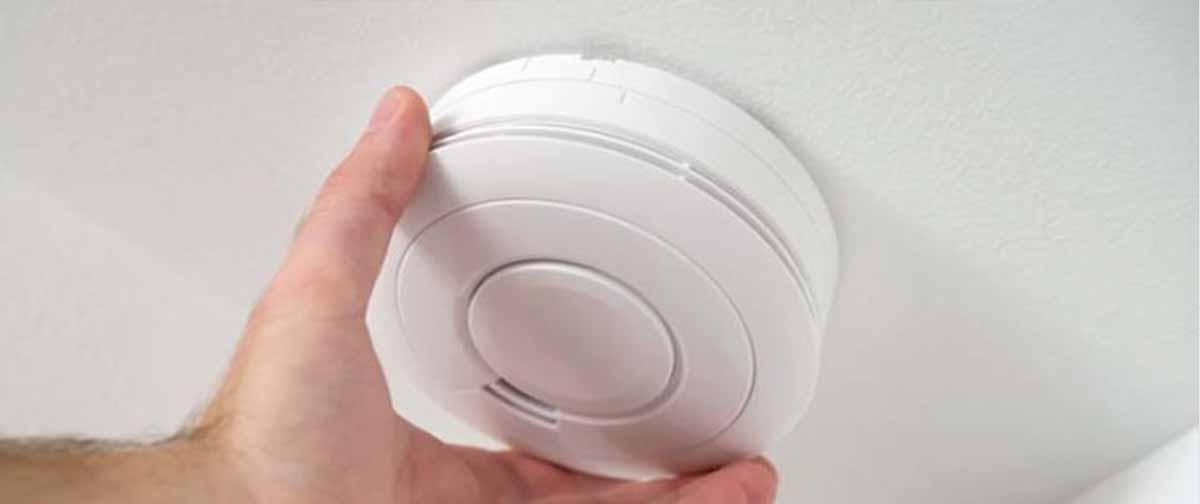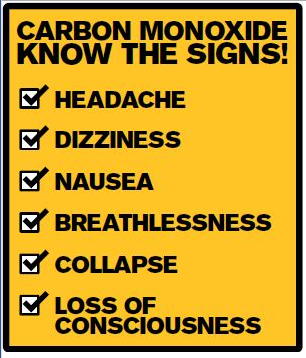Carbon Monoxide Poisoning - 10 Things You Need to Know

You can’t hear it. You can’t see it. And you can’t smell it. Commonly known as the silent killer, carbon monoxide poisoning is responsible for around 50 deaths in the UK every year.
This highly poisonous gas, produced by faulty and unsafe gas appliances, attacks with no warning. But as deadly as it is, carbon monoxide poisoning is preventable, and there are a number of things you can do to keep your family healthy and carbon monoxide safe.
The best way to prevent a carbon monoxide leak in your home is to ensure your boiler is serviced annually. A Gas Safe registered engineer should carry out maintenance and safety checks every year. This not only keeps the system running efficiently but also ensures that they can detect faults or potential leaks early on.
Here at Boiler Guide we take gas safety very seriously. Every 24 hours we automatically check the qualifications of every engineer on our network against the official Gas Safe Register. This means that you can rest assured any quotes you receive through Boiler Guide are from Gas Safe registered engineers with up to date qualifications and training.
Get Boiler Quotes
10 facts about carbon monoxide poisoning
Here are the top 10 things you need to know about carbon monoxide poisoning, and what measures you can take to avoid risk.
1. Faulty central heating systems
The most common sources of carbon monoxide in the home are faulty central heating systems and gas appliances, such as gas fires and cookers.
2. Symptoms of carbon monoxide poisoning
Although carbon monoxide poisoning is hard to detect, there are symptoms to look out for. The six main signs are: headaches, dizziness, breathlessness, nausea, collapse and falling unconscious.
3. Don’t confuse it for food poisoning
Symptoms of carbon monoxide poisoning are often mistaken for food poisoning, viral infections and even the flu. Severe poisoning can cause confusion, a fast and irregular heart rate, seizures and loss of memory, confusion and even complete loss of consciousness.
4. Most affected people
Children and older people are most at risk. Pets can also be affected, so if you have dogs or cats and they are displaying similar symptoms then carbon monoxide poisoning could be responsible.
5. Signs of carbon monoxide in the home
Is your home displaying signs of carbon monoxide poisoning? For example, does the pilot light blow out frequently; are your windows suffering from more condensation than normal or is there any unusual dark staining around or on your appliances.
6. Carbon monoxide detector
Get a carbon monoxide alarm fitted, if you don’t already have one. Costing between £20-£30 pounds, alarms are available from most well-known high street DIY stores, such as B&Q and Homebase.
7. Regular services
Remember, a faulty central heating boiler can be fatal. So make sure you get your heating systems and gas appliances serviced regularly by a Gas Safe registered heating engineer. Never use an illegal gas fitter. So check their credentials before you engage their services.
8. What to do if You have the symptoms
If you think you are experiencing symptoms of carbon monoxide poisoning, turn off gas appliances and open doors and windows to allow fresh air to circulate.
9. Call a doctor
Get yourself checked out by a doctor straight away. They will be able to do a breath or blood test to determine whether you have carbon monoxide poisoning.
10. Gas Safe registered engineer
Also make sure you call out a Gas Safe registered engineer to inspect your boiler as soon as possible. Until then, do not use the suspect appliance.
Get Boiler Quotes
Common carbon monoxide myths
 Carbon monoxide (CO) is a poisonous substance which is produced when organic, carbon-based fuels like gas or oil don’t burn to completion. Take a boiler for example; when there is insufficient oxygen for all of the gas in the combustion chamber to be burnt, carbon monoxide is produced.
Carbon monoxide (CO) is a poisonous substance which is produced when organic, carbon-based fuels like gas or oil don’t burn to completion. Take a boiler for example; when there is insufficient oxygen for all of the gas in the combustion chamber to be burnt, carbon monoxide is produced.
Carbon monoxide gas has no colour, taste, or smell meaning it is difficult to detect but can kill very quickly. When breathed in carbon monoxide compromises the behaviour of haemoglobin which is responsible for the transportation of oxygen around the human body. This lack of oxygen can then cause cells and body tissue to fail and die. Whilst lower levels of carbon monoxide breathed in over a longer period of time may not kill, they can cause health effects as severe as paralysis or brain damage.
According to the NHS, over 200 people are taken to hospital with suspected carbon monoxide poisoning, leading to around 50 deaths per year in the UK alone.
What Can Cause Carbon Monoxide to Leak?
The production of carbon monoxide is often caused by inadequate ventilation or poor maintenance of appliances. You should ensure that chimneys, flues and vents are free from obstruction or degradation. Regular servicing of gas appliances by a Gas Safe registered engineer can help to identify any carbon monoxide risks they could present.
A carbon monoxide safety alarm, which should comply with British and European Standards, is advisable as a further safety precaution. It’s important that this should only be in addition to, not instead of, regular inspection and servicing.
These are a few (not all) of the signs to look out for which indicate incomplete combustion and could result in carbon monoxide being produced by appliances:
- Yellow or orange rather than blue flames (except fuel effect fires or flueless appliances which display this colour flame)
- Soot or yellow/brown staining around or on appliances
- Pilot lights that frequently blow out
- Increased condensation inside windows
If you suspect that your appliance is leaking carbon monoxide (or if your carbon monoxide alarm goes off), you should immediately follow these steps:
- Stop using all appliances, switch them off, and open doors and windows to ventilate the property
- Evacuate the property immediately - stay calm and avoid raising your heart rate
- Call the gas emergency number on 0800 111 999 to report the incident,or the Health and Safety Executive (HSE) Gas Safety Advice Line on 0800 300 363
- Don’t go back into the property - wait for advice from the emergency services
- Seek immediate medical help - you may not realise you’ve been affected by the carbon monoxide, and going outside into fresh air won’t treat any exposure by itself
What are the symptoms of carbon monoxide poisoning?
The Gas Safe register describes 6 main symptoms of carbon monoxide poisoning to look out for:
- Headaches
- Dizziness
- Nausea/ sickness
- Breathlessness
- Collapsing
- Loss of consciousness
It's possible to mistake these symptoms for other illnesses, so you should also look out for other indicators including:
- Only experiencing symptoms when you are at home
- If symptoms are less severe when you leave home, but return when you get back
- If others in your household (including pets) are also showing symptoms at similar times
If you are exhibiting any symptoms or believe you could be at risk from a carbon monoxide leak, you should follow the previously mentioned steps as soon as possible.
Preventing a carbon monoxide leak
Prevention is the best way to combat the risks of carbon monoxide. You should always ensure you have a regular testing of gas appliances and an annual boiler service from a local Gas Safe registered engineer.
Installing carbon monoxide alarms (which are available relatively cheaply from your local DIY store) is also an effective additional measure that could provide an early warning of the presence of carbon monoxide in your home. The Gas Safe register does not recommend the use of ‘black spot detector’ warning strips – they are too easy to miss and won’t alert you if you have a carbon monoxide leak when you are asleep.
Find a Gas Safe registered engineer today and get your boiler checked for safety and efficiency.
Get Boiler Quotes



